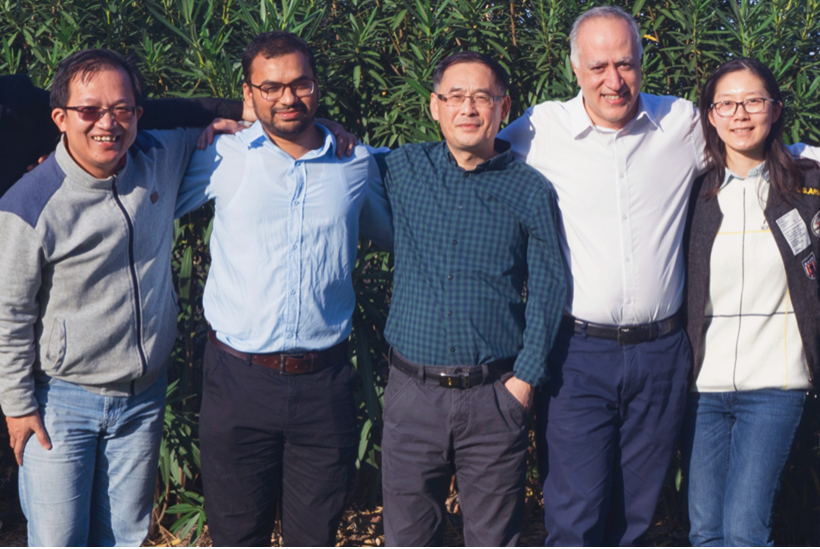York-led research team invents sustainable de-icing solution
Tags:

This story originally appeared in YFile, written by Diana Senwasane.
York University’s Lassonde School of Engineering Professor Alidad Amirfazli, along with a team of Jiangsu University of Technology (JSUT) researchers in China, have created a sustainable solution for de-icing with applications on planes, ships, infrastructure and more.
From aircraft to ship decks to cars to power lines and much more, ice can pose extreme danger. The unsafe and risky conditions ice creates has led a York University researcher to investigate new ways of effectively preventing ice accumulation. Amirfazli and the JSUT researchers are in the early stages of what they believe will be both an innovative – and sustainable – de-icing solution.
In a paper published earlier this year, the researchers detail their invention of a coating that combines superhydrophobic properties, which repels water, with Prussian blue, a compound made of complex inorganic salt typically used in paint, to effectively prevent and remove ice from surfaces.
“The developed coating harvests energy from sunlight to warm the surface,” said Amirfazli. “Its repellency properties reduce the chance of water staying on the surface and freezing, essentially ceasing icing.”
Amirfazli said the unique addition of Prussian blue to the coating is more cost effective, avoids cracking and improves durability.
The innovative solution is born out of a long-standing research collaboration between Amirfazli and his former postdoctoral student Professor Wen Li, now based at Jiangsu. The duo worked on several projects, including a previous paper on de-icing where they combined a superhydrophobic coating heated with electricity.
Amirfazli has spent years studying various coating strategies for de-icing, but it wasn’t until this international research partnership that this solution emerged.
Prussian blue is able to harness the energy of sunlight, effectively replacing the electric component and the use of wires, which was previously proposed as a de-icing solution.
Under Amirfazli’s supervision, the JSUT research team will continue to test their coating solution for de-icing, which could have widespread application in multiple sectors, like aviation, energy systems, construction, infrastructure and more.
“This solution can reduce icing of surfaces that cause hazardous conditions such as steps and walkways, reducing the probability of slipping, or mitigating the icing on wind turbines, which can reduce power production in winter months,” said Amirfazli.

While the coating is a long way from being in market, this is a significant step for the team of researchers.
“Throughout my career I have benefited from collaborations and knowledge sharing with many colleagues from around the world,” said Amirfazli. “Knowledge has no boundaries, creating an inherent strength for human ingenuity. This project is a perfect example of that.”